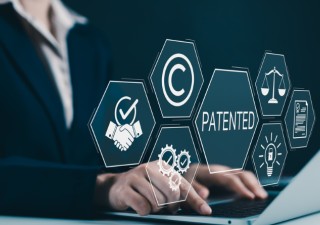Listening to ringtones, not copyrighted information
30 April 2025

Some of us get bored using the default ringtones in our mobile phones, so we buy something that would be more exciting, from the meowing of a Siamese cat to a line from a favorite song, to express our personality or to easily identify people who are calling. In choosing a ringtone, we surely need to listen to it before deciding to buy. In the case of Filipino Society of Composers and Publishers (FILSCAP) v. Wolfpac Communications, Inc. (G.R. No. 184661, February 25, 2025, uploaded in April 2025), the Supreme Court of the Philippines had the occasion to rule that Wolfpac’s use of the ringtone samples does not constitute public performance which is a form of copyright infringement, but is communication to the public under the fair use doctrine.
This case began when FILSCAP, a collective management organization, in 2004 came across an advertisement from Wolfpac promoting the downloading of ringback tones for mobile phones and allowing the buyer to listen for 20 seconds to a portion of a song in its come-on phrase “Listen B4 You Download.” FILSCAP demanded Wolfpac secure the necessary performance license and pay royalties since some of the ringtones are copyrighted works included in its repertoire. Because Wolfpac refused, FILSCAP sued for copyright infringement before the regional trial court, which dismissed the case on the ground that the 20 seconds pre-listening function did not constitute public performance, ergo, no copyright infringement, and appealed directly to the Supreme Court, bypassing the Court of Appeals.
The Supreme Court gave due course stating that the appeal was limited to questions of law, and that the novel character of the case is one of the well-defined exceptions to the doctrine of hierarchy of courts. Also the regional trial court decided a question of substance referring to U.S. cases which have persuasive value, but has no legal Philippine precedent yet, and that the resolution of the issues will greatly contribute to the country’s intellectual property jurisprudence.
The Intellectual Property Code of the Philippines Code provides that copyrights are composed of seven types of economic rights: reproduction, derivative, distribution, rental and lending, public performance, communication to the public, and resale. According to the Supreme Court, there are two separate rights in music: (i) the right over the notes and lyrics pertaining to the song itself created by the composer and the lyricist, and (ii) the right over what is audible, which means the particular version of a person’s performance that is fixed in a sound recording. Musical compositions can be communicated to the public or publicly performed, and these rights are separate and defined in the IP Code. Communication to the public means any communication to the public by wire or wireless means which involve the act of making the work available to the public, and provides the public the option to access the work from a place and time individually chosen. Public performance has also two aspects: (i) the actual performance of the work, or making the work audible, (ii) the actual or possible public perception without the need for communication to the public.
In this case, the act complained of is Wolfpac’s use of the musical works belonging to FILSCAP’s repertoire on its website’s pre-listening function which FILSCAP claims is public performance because the sample ringtones are made available to unlimited number of people on its website. On the other hand, Wolfpack considers the pre-listening function as a communication to the public because the prospective buyers of the ringtones may listen to the samples from a place and time individually chosen by them.
One of the defenses used by Wolfpac is that it had deeds of assignments from the composers allowing it to convert the songs into ringtones. The Supreme Court ruled that the deeds of assignment did not authorize Wolfpac to allow the 20 second pre-listening function to the potential buyer. Nonetheless, the 20-second samples were found by the Supreme Court as falling under fair use.
The Supreme Court came to this conclusion this way: Wolfpac’s act of placing the pre-listening function makes the musical work available to the public thru the use of the internet, but the musical work was not yet audible, so the first aspect of public performance is absent. The musical work becomes audible only when the potential buyer clicks the play button to hear the sample song.
The second aspect of communication to the public now becomes apparent since any member of the public can access the samples from a place and time individually chosen by them. There is performance once the potential buyer plays the sample, but in this case, it is the potential buyer who makes the work audible, not Wolfpac. The Supreme Court said that such performance is not actionable because the potential buyer performed the musical work in private before deciding whether to purchase the ringtone. It further stressed that what is prohibited is a public performance, not performance per se.
The IP Code provides that the use of copyrighted works for criticism, comments, news reporting, teaching, scholarship, research, and other similar purposes is fair use. In this case, the 20-second samples helped the consumers make an informed choice before deciding whether or not to purchase a ringtone. The “similar purpose” involved was therefore consumer protection. And while a 20-second preview is substantial, it was reasonable and necessary in order to provide potential customers with sufficient information. The samples also did not serve as a substitute for the paid ringtones, so there was no substantial economic harm to the composers. Hence, Wolfpac’s pre-listening function did not constitute copyright infringement.
It took 20 years before this dispute was finally resolved. Parties to copyright agreements would do well to learn from this case. Had the deed of assignment already included a provision on Wolfpac’s intention to use 20-second samples to market the ringtones, then perhaps, protracted court litigation could have been avoided. Indeed, an ounce of prevention would have been worth more than two decades of litigation.









